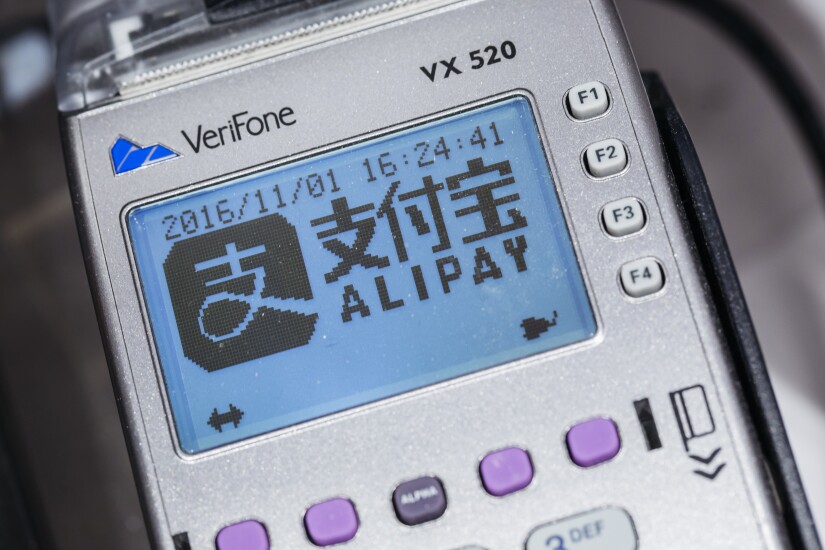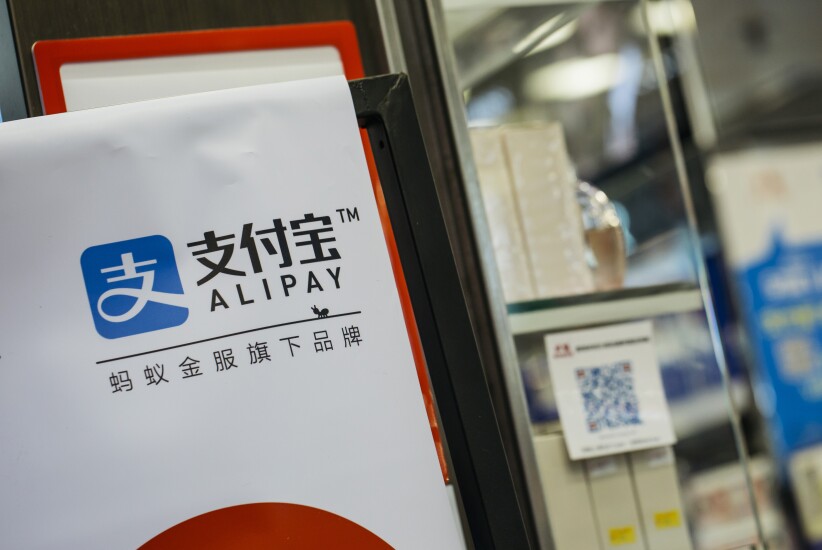

MoneyGram
Ant is owned by the billionaire Jack Ma and is affiliated with Alibaba, the giant Chinese e-commerce company. MoneyGram will give it access to a peer-to-peer transfer market in the U.S., as well as an engine for international remittances.
"The acquisition of MoneyGram is a significant milestone in our mission to bring inclusive financial services to users around the world," Ant Financial CEO Eric Jing said in a January press release. The deal is expected to close in the second half of 2017 and received MoneyGram shareholder approval in May, following a short bidding war with U.S.-based Euronet that raised Ant's offer from its original bid of $880 million.
Buoyed by China's fast-growing middle class, Ant, Alibaba and Alipay have all been spreading their wings internationally. Ant previously received a digital wallet license in Hong Kong, considered a precursor to broader international expansion. It also is working on a distributed ledger project that it hopes will expand its 450 million user base by nearly 500% over the next 10 years.
For the most part, these geographic plays have been aimed at travelers from China to the U.S. and other countries—Ant also has a deal with
Having MoneyGram under its umbrella would give Ant and its affiliates a foothold to serve non-Chinese consumers. Beyond being the main U.S. rival to Western Union, MoneyGram also has a transfer partnership with Walmart.

Local partnerships
Citing statistics from Ant Financial, Alipay says approximately 2 million of its 450 million users visit the U.S. every year. Ant Financial, an Alipay parent company of Alibaba Group Holding Ltd., says shopping is the top tourist activity, with a Chinese visitor projected to spend between $500 and $3,500 per trip.
“Scale, security and speed are important to us as we look to enable our customers to walk into a store while traveling abroad and pay for purchases with the Alipay App — just like they do here in China,” Douglas Feagin, senior vice president of Ant Financial Services Group and head of Alipay International, said in an October 2016 press release.
In Europe, Alipay has signed similar deals with
Alongside the U.S., Verifone says it will also offer Alipay as an embedded payment option to users of its mPOS device in Europe.

Focus on merchants, not rival wallets
From its initial foray in North America targeting about 5 million Chinese people visiting tourist destinations in the U.S. and Canada, Alipay is now working to expand acceptance more broadly.
“We’re working to eventually make Alipay part of mainstream America by integrating with as many POS locations as possible, so one day Alipay will be a fairly widespread payment mark when consumers walk down the street of any city,” said Souheil Badran, president of Alipay North America.
Alipay is sticking closely to a merchant-centric approach in North America, and has no plans to market its wallet broadly to consumers in the U.S. and Canada, which observers say would be an
“Our whole goal in North America is to expand convenience for Alipay’s existing users wherever they go, and improving their shopping options so it’s easy for them to find other places to go—the last thing we’d want to do is go up against the third-party wallets in the U.S.,” Badran said.

Teaming up with banks
"This agreement is a great opportunity to service this growing market of visitors in Spain while allowing Spanish stores to promote sales and special offers directly to Chinese tourists," Jose Fernandez da Ponte, head of business development and new ventures at BBVA, said in a June 28 press release.
BBVA says approximately 400,000 Chinese tourists visit Spain each year, acknowledging that even though it is not the largest group of foreign visitors, the Chinese are generally the highest spenders in countries they visit.
"Chinese users have been enjoying a cashless and cardless lifestyle with Alipay in their daily life in China," Rita Liu, head of Alipay for Europe, Middle East and Africa, said in the release. "Cooperating with BBVA not only allows us to make Chinese tourists' shopping experience in Spain as simple as in China, but also makes it easier for Spanish merchants to do business with Chinese customers."

Working with Stripe
"The key to selling for U.S. merchants is all about the logistics, the regulatory issues, the marketing," said Raymond Pucci, an associate director at Mercator Advisory Group.
The challenge is managing it all. It's possible for companies to do it on their own, but partnering with an intermediary in the target country is more straightforward for all involved, according to Alipay.
"Can a [North American] merchant come directly to us? The answer is yes," said Souheil Badran, president of Alipay in North America. "But the beauty of the relationship with Stripe is the focus on the back end. The settlement, the processing, is all one one file. For a small to mid-sized business, they're simply offering their products to an extended audience."

Paytm
Alibaba invested $177 million into Paytm E-Commerce, while the remaining $23 came from Saif Partners. China's main e-commerce payment method,
Earlier this year, Paytm revealed it received permission from Indian regulators to launch
That move came about six months after Paytm said it would split its e-commerce business from its payments unit so as to better compete with the likes of Flipkart, Snapdeal and even Amazon.
Paytm intends to to sell close to a billion products from merchants across South East Asia on its platform, a number that far exceeds the sales of rival sites.
Alibaba's first indication that it intended to move Paytm forward occurred two years ago when backing





